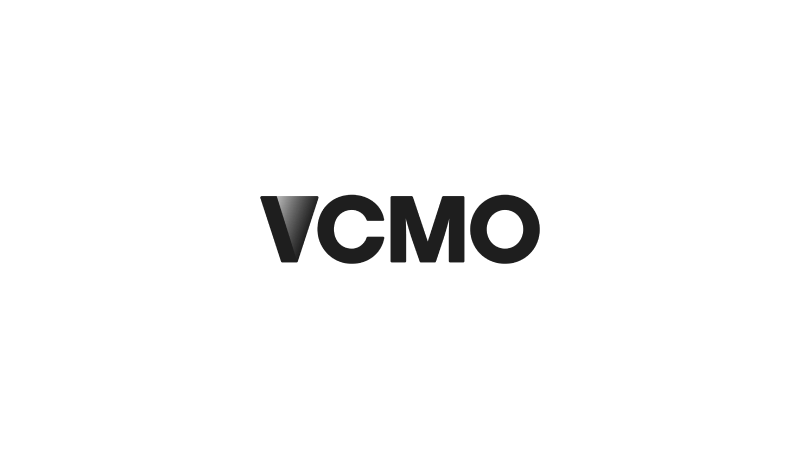Compare full-time and fractional CMOs—cost, culture, speed, and strategy—to choose the right model for your business growth.
Introduction: A Strategic Decision, Not Just a Cost Comparison
For businesses at critical growth stages, marketing leadership is not optional. The question is no longer whether to have a senior marketing voice at the leadership table, but how best to structure that role. Increasingly, executives and investors are weighing two options: appointing a Fractional Chief Marketing Officer (CMO) or committing to a full-time CMO. Both models provide access to senior expertise, but they do so in very different ways, each carrying distinct advantages and risks.
Too often, the decision is reduced to a discussion about cost. While affordability is an important factor, it is far from the only one. The choice between fractional and full-time leadership shapes cultural integration, speed of execution, accountability, and even enterprise value. It influences not just marketing performance but also how the business positions itself for growth, funding, or exit.
This article explores the relative strengths and limitations of both models. It sets out when a Fractional CMO can accelerate results through flexibility and speed, when a full-time CMO provides the depth and continuity required for scale, and how business leaders can evaluate which structure aligns best with their strategic objectives.
The Case for a Fractional CMO – Advantages
Fractional CMOs are increasingly seen as a smart solution for businesses that need senior-level marketing leadership but cannot justify or attract a full-time executive. Their appeal lies in the combination of flexibility, speed, and commercial impact.
One of the most significant advantages is cost efficiency. A Fractional CMO provides C-suite calibre expertise at a fraction of the expense of a permanent hire. Without the long-term commitments of salary, benefits, and equity, businesses can redirect capital towards execution and growth initiatives while still benefiting from strategic leadership. This makes the model particularly attractive to SMEs, scaleups, and investor-backed firms where cash flow discipline is paramount.
Equally important is agility. Fractional CMOs can be engaged quickly, often with minimal onboarding time compared to full-time executives, and their part-time model means businesses can scale involvement up or down as needs evolve. They also bring a breadth of perspective drawn from working across multiple sectors and business models, enabling them to challenge assumptions and introduce proven practices from outside the organisation’s immediate environment.
Finally, the fractional model reduces risk. For companies uncertain about their long-term needs, it offers a “try before you buy” approach—delivering leadership now while preserving flexibility for the future.
The Case for a Fractional CMO – Limitations
While the fractional model offers flexibility and cost advantages, it is not without drawbacks. The most common challenge is cultural integration. A Fractional CMO, by design, is not present every day. This can make it harder to build the deep relationships and informal networks that often underpin influence within a leadership team. Without deliberate effort, they risk being seen as an outsider rather than an embedded executive.
Availability is another constraint. A Fractional CMO may split their time across multiple clients, which means they cannot always respond instantly to emerging issues. Businesses that require intensive, day-to-day leadership may find the part-time model insufficient for their needs.
Knowledge transfer can also be uneven. While many Fractional CMOs invest in mentoring teams and embedding systems, the risk remains that expertise leaves with them at the end of the engagement. If businesses do not prioritise capability building alongside delivery, the marketing function may revert to old habits once the engagement concludes.
Finally, while breadth of experience is an advantage, it can also mean less sector-specific depth. A Fractional CMO may not always have the nuanced understanding of industry regulations, customer behaviours, or competitor landscapes that a full-time leader builds over years within one domain.
“Fractional CMOs bring agility and breadth of perspective, but their impact depends heavily on how well they are embedded. Without deliberate integration, businesses risk underutilising senior talent and losing knowledge when the engagement ends.”
Lydia McClelland - Chartered Fractional CMO, VCMO
The Case for a Full-Time CMO – Advantages
A full-time CMO remains the traditional model of marketing leadership and, for many organisations, the most appropriate choice. The primary advantage is commitment. A permanent executive dedicates all their time and energy to the business, allowing them to immerse fully in its culture, market dynamics, and operational rhythms. This depth of involvement fosters trust, strengthens cross-functional relationships, and ensures that marketing has a constant voice at the leadership table.
Full-time CMOs also bring continuity of vision. With the ability to plan over multiple years, they are better positioned to deliver long-term strategies such as brand repositioning, international expansion, or multi-channel transformation programmes. Their daily presence allows them to adapt plans quickly, monitor performance continuously, and course-correct in real time.
Authority is another key strength. As permanent members of the C-suite, full-time CMOs typically hold greater decision-making power and accountability for results. Their role is not only to guide marketing but also to shape broader business strategy alongside peers in finance, operations, and product.
For larger enterprises, complex organisations, or businesses operating in highly regulated sectors, the stability, authority, and cultural integration of a full-time CMO often outweigh the flexibility offered by the fractional model.
The Case for a Full-Time CMO – Limitations
Despite their advantages, full-time CMOs also present challenges that can make them less suitable for certain businesses. The most immediate consideration is cost. Recruiting and retaining a senior executive requires a significant financial commitment, encompassing salary, benefits, equity, and bonuses. For small and mid-sized businesses—or even scaleups under investor scrutiny—this can represent an unsustainable burden on cash flow.
Hiring timelines are another limitation. Senior executive searches are lengthy, often stretching over several months, and onboarding can take equally long. In fast-moving markets where momentum matters, this delay can hinder growth. Once in place, full-time CMOs are also less flexible to scale up or down based on business needs. Their contracts and compensation structures are designed for permanence, not agility.
Another limitation is perspective. Because they are immersed in one business full-time, full-time CMOs may become insular in their outlook, less exposed to external innovations and best practices. Finally, no executive is a perfect fit. Even highly capable CMOs may carry skills gaps—for example, strong in brand but weaker in digital or demand generation. Replacing a full-time executive is costly and disruptive, leaving businesses exposed if the initial appointment does not deliver.
“A full-time CMO provides depth, continuity, and cultural influence, yet the cost and commitment are significant. For many growth-stage businesses, the question is not capability, but whether the investment aligns with their risk profile and cash flow.”
Rachael Wheatley - Chartered Fractional CMO, VCMO
Key Comparative Considerations
When deciding between a Fractional CMO and a full-time CMO, business leaders should move beyond lists of advantages and disadvantages to consider the strategic trade-offs. One of the most important is time horizon. Fractional CMOs are often best suited for short- to medium-term needs—accelerating growth, stabilising underperformance, or preparing for investment rounds—where speed and flexibility are critical. Full-time CMOs, by contrast, are better aligned to multi-year transformation programmes and long-term brand building.
Risk profile is another differentiator. A fractional engagement allows businesses to access senior expertise with lower financial and operational risk. If the fit is wrong, disengagement is relatively straightforward. A full-time appointment, however, carries higher stakes. Misalignment in this context can mean sunk costs, redundancy packages, and disruption to leadership continuity.
Cultural integration also matters. Full-time CMOs can immerse themselves more deeply in company culture, building informal influence and trust day to day. Fractional CMOs can still achieve alignment, but it requires structured onboarding and deliberate relationship building.
Finally, leaders should consider commercial impact. Fractional CMOs deliver speed to traction and external perspective; full-time CMOs provide depth, authority, and continuity. The right choice depends not on which model is “better,” but on which aligns most closely with the business’s stage, objectives, and risk appetite.
Fractional CMO vs. Full-Time CMO: Key Differences at a Glance
Conclusion: Matching Model to Business Context
The choice between a Fractional CMO and a full-time CMO is not a matter of superiority, but of fit. Each model is designed to solve different challenges, and the right decision depends on the stage of the business, its strategic priorities, and its appetite for risk.
A Fractional CMO offers flexibility, cost-efficiency, and speed to impact. They are particularly effective when businesses face inflection points: stalled growth, market entry, investor pressure, or leadership gaps. Their role is to provide immediate strategic direction, align marketing with commercial objectives, and leave behind stronger systems and teams.
A full-time CMO, by contrast, is best suited to organisations requiring deep cultural integration and long-term vision. Larger enterprises, complex structures, and heavily regulated industries often benefit more from the continuity, authority, and daily leadership that a permanent executive provides.
Ultimately, the decision should be framed not as “fractional versus full-time” but as “which model best advances our business objectives right now?” By clarifying needs, weighing trade-offs, and aligning leadership structure to strategic context, CEOs, founders, and investors can ensure marketing leadership becomes not just a function, but a driver of growth and enterprise value.
Suggested Further Reading
Is a Fractional CMO the Same as a Marketing Consultant?
Fractional CMO vs Agency: What’s the Right Fit?
How to Choose a Fractional CMO for Your Business: A Comprehensive Guide
How To Integrate a Fractional CMO Into Your Business
How to Measure the ROI of a Fractional CMO
About VCMO
VCMO is a UK-based provider of fractional marketing services, supporting B2B SMEs—ranging from funded scale-ups to mid-tier and private equity-backed businesses—through key moments of growth and transformation. Its Chartered Fractional CMOs and SOSTAC® certified planners embed strategic marketing leadership into organisations navigating product launches, new market entry, acquisitions, and leadership gaps.
What’s a Rich Text element?
The rich text element allows you to create and format headings, paragraphs, blockquotes, images, and video all in one place instead of having to add and format them individually. Just double-click and easily create content.
- By following these tips, you can make sure you’re noticed on LinkedIn and start building the professional connections you need to further your career.
-

Static and dynamic content editing
A rich text element can be used with static or dynamic content. For static content, just drop it into any page and begin editing. For dynamic content, add a rich text field to any collection and then connect a rich text element to that field in the settings panel. Voila!
How to customize formatting for each rich text
Headings, paragraphs, blockquotes, figures, images, and figure captions can all be styled after a class is added to the rich text element using the "When inside of" nested selector system.


Ready to take your marketing to the next level? Let us help you get there.
Subscribe to Our Newsletter
Fractional Edge is our montly newsletter sharing expert opinion on the latest trends in fractional leadership, curated marketing content from leading sources, VCMO events, and much more. Subscribing is quick — just add your name and email.











.jpg)





